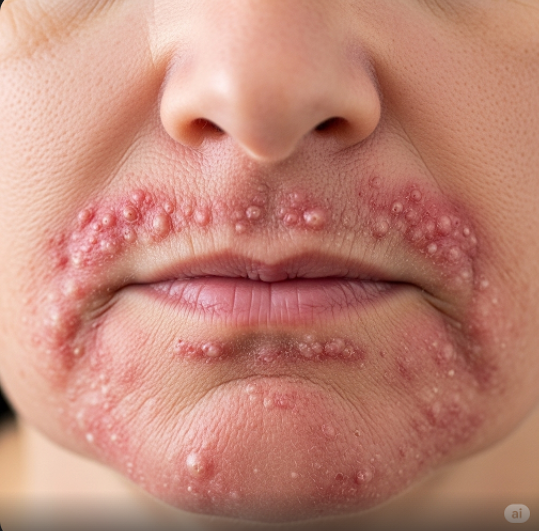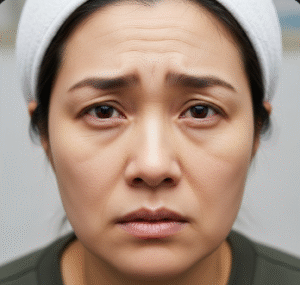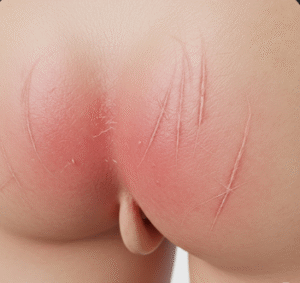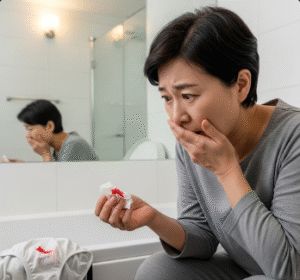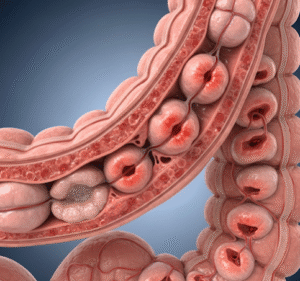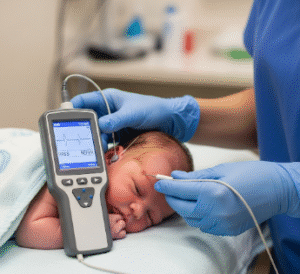Overview
Perioral dermatitis is a common inflammatory skin condition that causes red, bumpy rashes around the mouth, nose, and sometimes the eyes. It is often mistaken for acne or eczema but requires a different approach for effective treatment. This condition primarily affects young women, though it can occur in people of all ages and genders.
What is Perioral Dermatitis?
Perioral dermatitis is characterized by clusters of small, red papules (bumps) around the mouth area. The skin between the nose and the upper lip is usually most affected, and in some cases, the rash may spread to the sides of the nose, around the eyes (periorbital dermatitis), and even the forehead. Unlike acne, it typically does not involve blackheads or whiteheads.
The condition is often triggered by topical corticosteroid use, but other contributing factors can worsen or sustain it. It tends to be chronic and may relapse without appropriate treatment.
Symptoms
Symptoms of perioral dermatitis include:
- Red or pink bumps around the mouth, nose, or eyes
- Itching or burning sensation
- Dry, flaky skin over the affected area
- Mild swelling or tenderness
- Clear fluid discharge from bumps (in some cases)
- Rash typically spares the skin right next to the lips, creating a clear ring
Causes
While the exact cause is not fully understood, several common triggers and contributing factors are known:
- Prolonged use of topical corticosteroids (creams, ointments)
- Overuse of heavy facial creams or moisturizers
- Use of fluoridated toothpaste
- Hormonal fluctuations
- Use of nasal or inhaled corticosteroids
- Overuse of cosmetics or facial products
- Microbial factors such as bacteria or yeast imbalance on the skin
Risk Factors
Risk factors for developing perioral dermatitis include:
- Female gender (especially ages 16–45)
- Use of topical steroids for acne, rashes, or eczema
- Use of hormonal birth control
- Sensitivity to skincare or cosmetic products
- Living in a humid climate
- History of allergies or sensitive skin
- Use of fluoridated toothpaste or facial cleansers with strong ingredients
Complications
Perioral dermatitis is not life-threatening but can significantly affect quality of life due to its appearance and persistence. Complications may include:
- Chronic skin inflammation
- Psychological distress or reduced self-confidence
- Skin pigmentation changes after healing (post-inflammatory hyperpigmentation)
- Recurrence of symptoms if underlying causes are not addressed
- Scarring (rare, but possible in severe or untreated cases)
Prevention
Preventive strategies for perioral dermatitis include:
- Avoiding prolonged use of topical corticosteroids on the face
- Choosing non-comedogenic, fragrance-free skincare products
- Switching to fluoride-free toothpaste if sensitive
- Limiting heavy facial moisturizers or oily creams
- Washing the face with gentle, non-irritating cleansers
- Avoiding over-cleansing or exfoliating
- Managing stress and hormonal fluctuations when possible
- Consulting a dermatologist before using any topical treatments
Treatment Options in Korea
South Korea’s advanced dermatology system provides excellent care for inflammatory skin conditions such as perioral dermatitis. Treatment typically includes:
- Discontinuation of Triggers: The first step is to stop using topical corticosteroids and identify potential irritants. Dermatologists in Korea provide customized skin product evaluations.
- Topical Antibiotics: Such as metronidazole or clindamycin gels or creams are prescribed to reduce inflammation and bacterial overgrowth.
- Oral Antibiotics: Tetracycline-class antibiotics like doxycycline or minocycline are used for more severe or resistant cases, usually for a few weeks.
- Barrier Repair Treatments: Korean clinics may offer customized moisturizing regimens with ceramide-rich or niacinamide-based products to rebuild the skin’s protective layer.
- Laser Therapy: In persistent cases, gentle laser treatment (e.g., pulsed-dye laser) is available at advanced clinics to reduce redness and inflammation.
- Lifestyle Counseling: Korean dermatology centers often include holistic consultation to help patients manage cosmetic use, hygiene habits, and diet.
Top dermatology hospitals and skin clinics in South Korea—such as ID Dermatology, Yehyun Dermatology, and Severance Hospital Dermatology Department—are highly regarded for treating facial dermatoses, offering personalized skincare, advanced technologies, and patient education.

